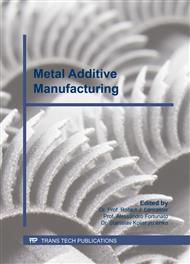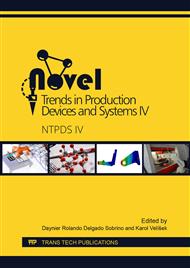p.10
p.18
p.25
p.34
p.43
p.52
p.59
p.68
p.78
Impact Testing of H13 Tool Steel Processed with Use of Selective Laser Melting Technology
Abstract:
This paper deals with experimental determination of toughness, hardness and impact properties of AISI H13 (DIN 1.2344) tool steel which was manufactured using Selective Laser Melting (SLM) technology. The H13 is a chromium-based tool steel which is primarily used for hot working applications such as pressure casting moulds for automotive industry. Evaluation of toughness and impact properties are vital for reliable use of SLM-processed material, especially in the case of highly loaded structures. Mechanical tests were carried out on printed specimens, subjected to thermal treatment and proper data were evaluated. For better understanding of differences between conventionally produced and SLM-processed material, same mechanical tests were done even for hot-rolled H13 tool steel. SLM-printed material shows more brittle behaviour than conventionally made material. This is most probably caused by combination of H13 thermal properties and fast melting and solidification due to SLM processing.
Info:
Periodical:
Pages:
43-51
Citation:
Online since:
April 2018
Price:
Сopyright:
© 2018 Trans Tech Publications Ltd. All Rights Reserved
Share:
Citation:



